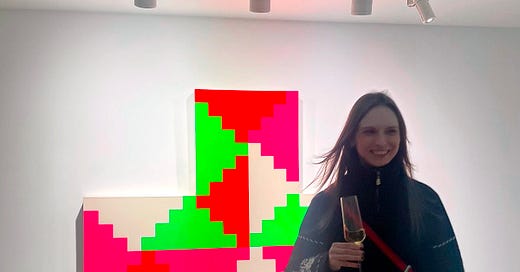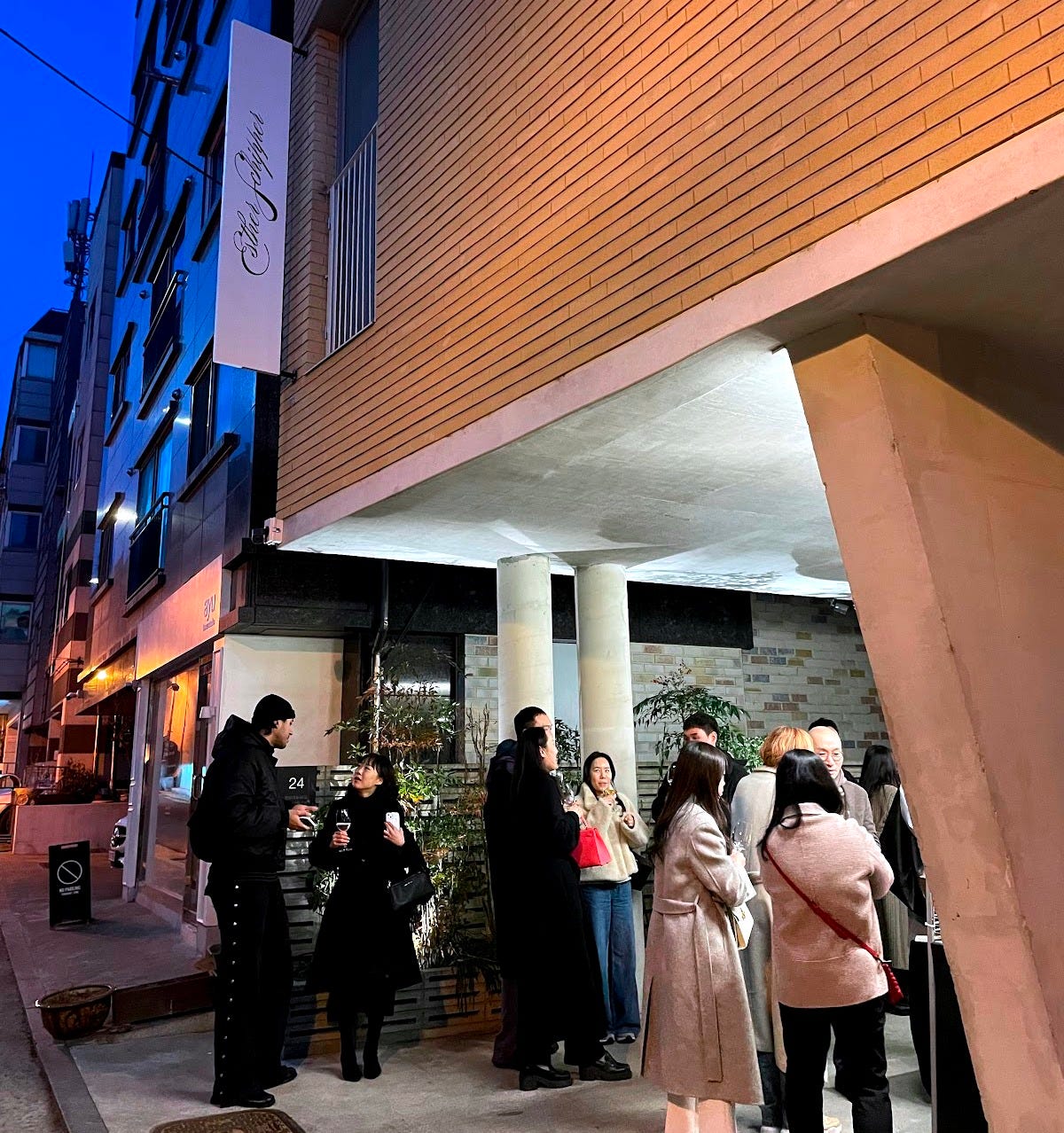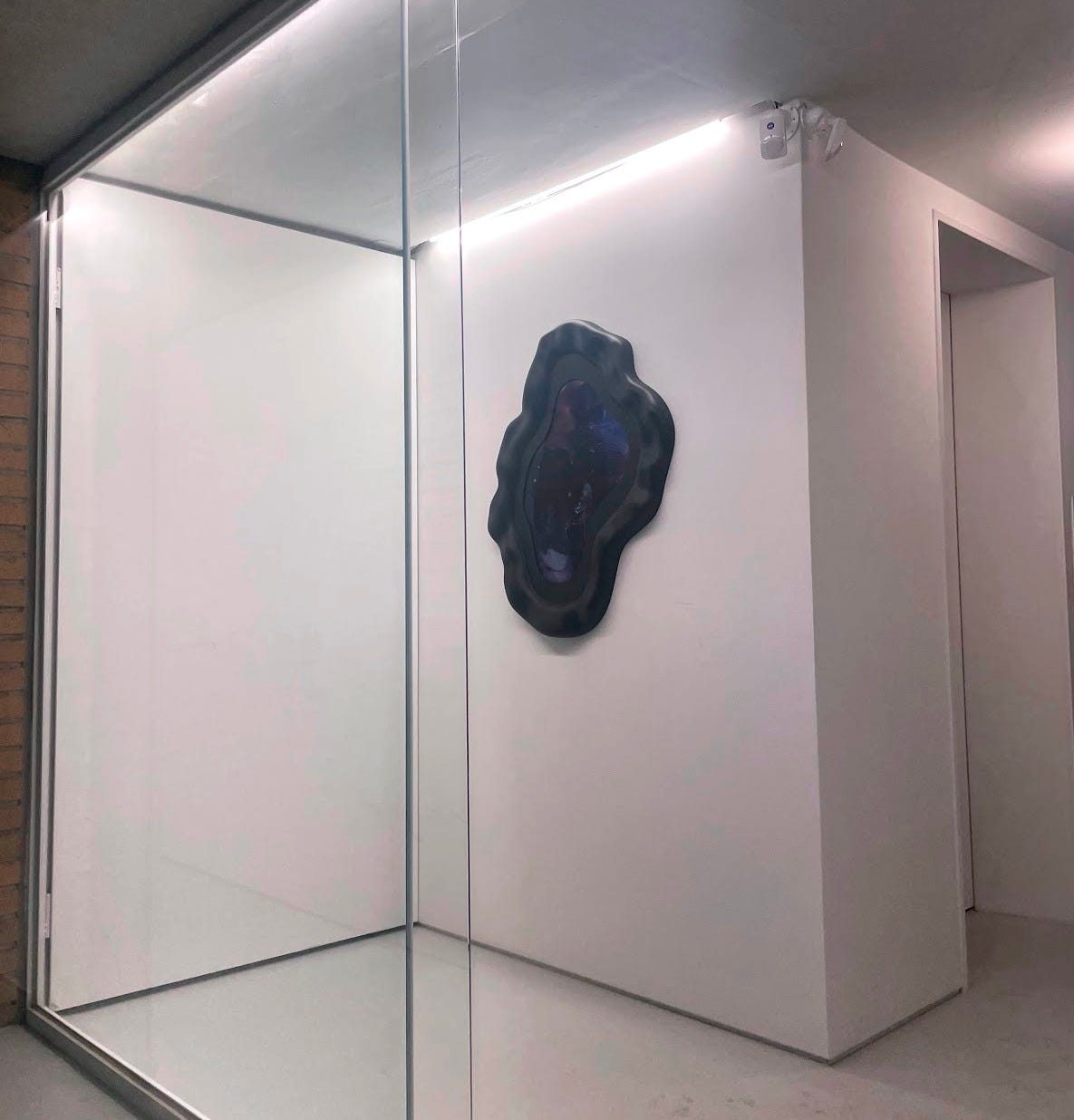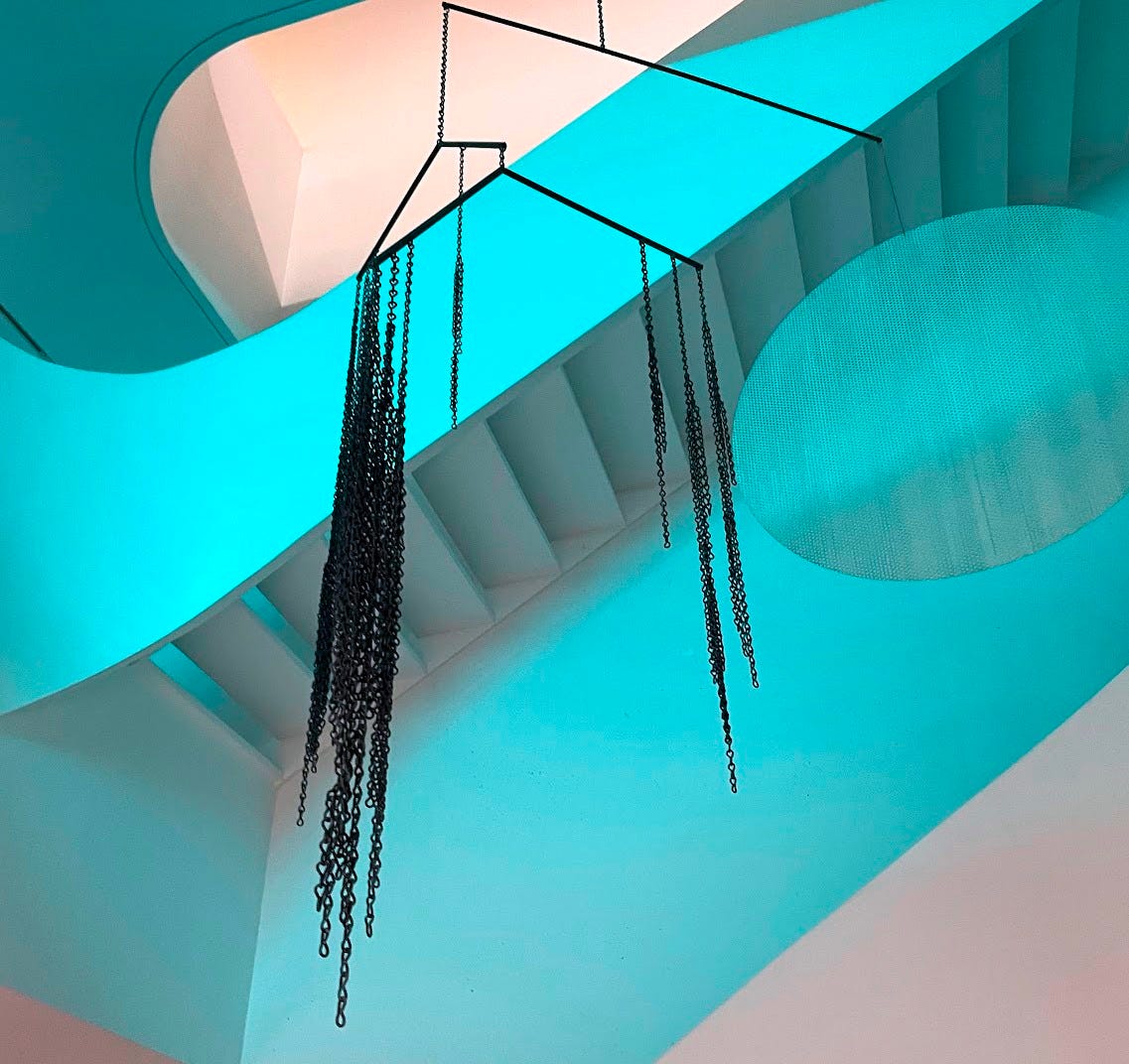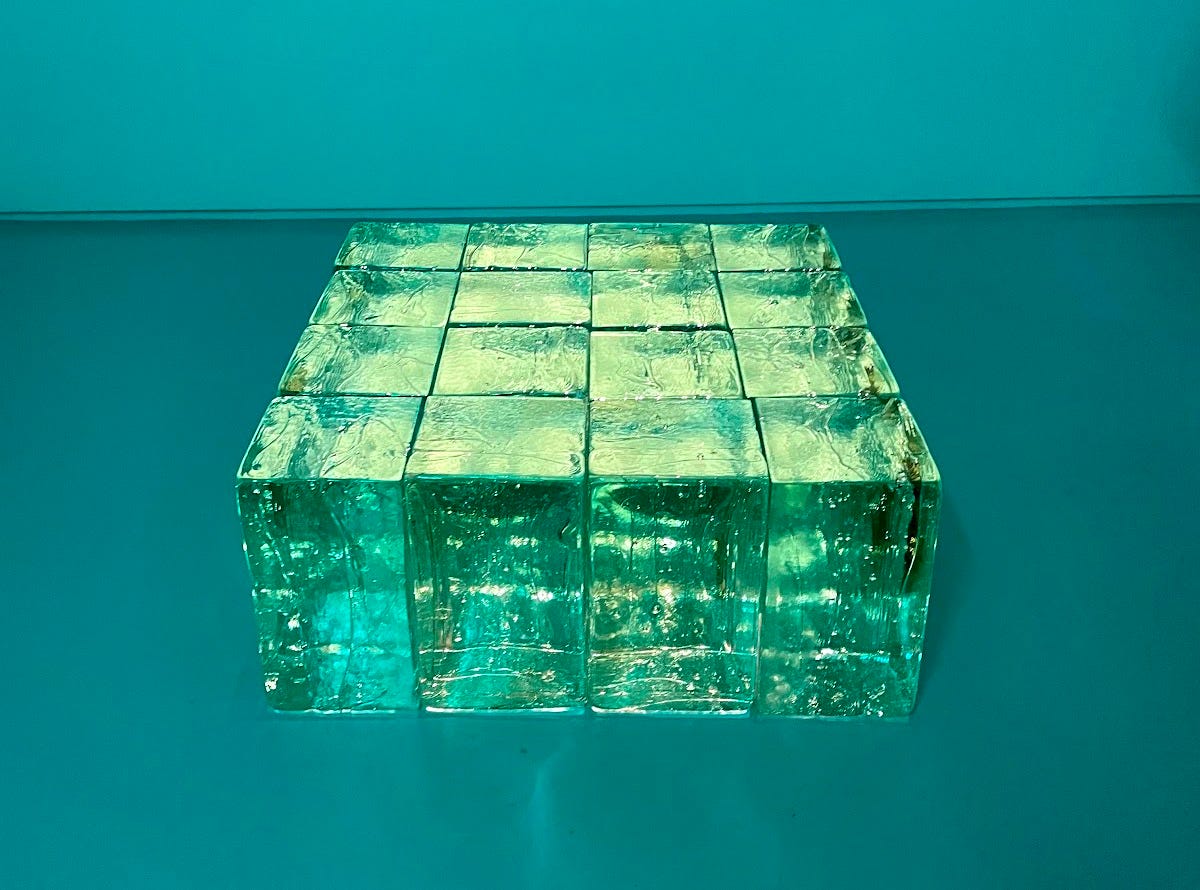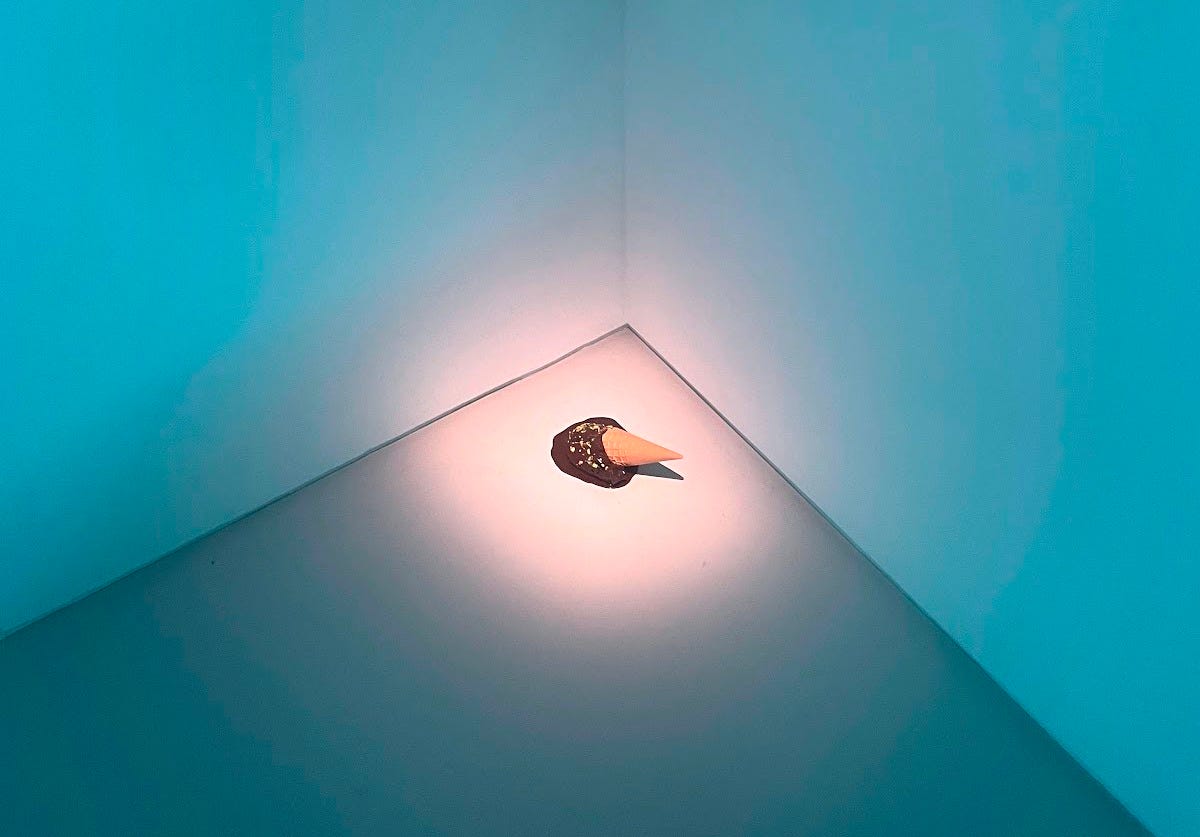Esther Schipper's Arrival in Hannam
(Re)opening night for Esther Schipper Seoul.
A winding staircase, waiting for champagne, and a diverse showing of international and Korean contemporary works in a fresh, new location.
The Locale
Esther Schipper's new gallery location in one of the quieter corners of Hannam-dong, across a busy street from what is known as "Blue Square," was buzzing by roughly 7:30 on the night of the gallery's reintroduction to Seoul on February 22nd when I arrived. Stressed out by new jobs and cold, I was more than ready to view some art and be indoors.
Hannam-dong, the swanky area neighboring Itaewon-dong, already houses a number of big-name gallery locations on its main strip, which is also adorned with expensive cafes and luxury retail options. Esther Schipper joins the ranks of Pace Gallery, Lehmann Maupin, Foundry, Gana Art Hannam, Gallery Baton, and others, as well as the prestigious museum Leeum. But what sets Esther Schipper Gallery somewhat apart in this neighborhood full of gallery-hopping choices is its location. It is not the only gallery in the immediate vicinity, with Working with Friend and This Weekend Room galleries nearby, but the gallery's arrival brings with it prestige and an international outlook that is new to the quaint, slightly quieter part of Hannam-dong where it has taken up residence.
The Crowd
Perhaps it was this novelty that brought out a good number of visitors and members of the Seoul art scene, especially considering the not enormous size of the space. Indeed, the five-story, narrow white building was full of the mostly typical gallery-opening-reception crowd milling about and squeezing past each other on the staircase. In fact, I ran into my former boss and incredibly friendly CEO and director of Humor Garmgot gallery. Seoul's art scene can feel like a small town where everyone knows everyone.
The Space
Esther Schipper Gallery's space is interesting in that it has open space from the second floor to the fifth floor, so that guests can see up through the gallery's interior. The central staircase wraps around the peripheries of each floor, so the building feels like one large spiral staircase, encouraging visitors to encircle each floor before reaching the top in a rhythmical pattern. On the occasion of the opening, the guests could see up to the pink-balloon-covered ceiling of the top floor.
On offer during the opening was standard fare–bite-sized foods and champagne. In fact, what speaks to the good turnout of opening night was that, at one point, I had to wait for champagne, since the caterers had run out of clean glasses (and I very much wanted that second glass of champagne).
The Works
Thirst quenched, it was time to acknowledge the artwork. The showing was on the sparse side with only around a maximum of four artworks per floor. No doubt, an exhibition of a greater quantity of artworks would give gallerists and curators a good amount of stress while watching over them.
However, the exhibition made interesting use of the limited space. It included a rather small number of paintings, and instead brought attention to wall-mounted 3-dimensional pieces, such as sleek, gold ovular work that made me use the word "Brancusi-esque," standing sculptural pieces, including two melting ice cream cones, and a piece that made use of lighting and text. One work included suspended dangling metal elements, allowing it to use the central open space between the floors of the building. There were truly very few square or rectangular paintings, with one of the few paintings having a geometric form and a mixed-media piece near the entrance having a more organic, space-object-like shape.
Simon Fujiwara's Standout Piece
Among the works in the show that stood out was, however, a rectangular mixed-media painting by multi-disciplinary British artist Simon Fujiwara (b. 1982) that was on display on the top floor–definitely a strong anchor for the show. His painting is acrylic on canvas, with pastel in areas on top of the paint adding texture and depth of color. Interestingly, it is on canvas but framed within a milky blue wooden frame.
The painting depicts a painter full of lust attempting to paint his subject, a nude muse with engorged breasts and buttocks, in a cartoonish, over-the-top style, dripping with humor and irony. The painter and muse literally drip, as well, with drops of yellow liquid dotting the canvas, perhaps drawing attention to the fact that the painting is in fact a painting. These droplets play with the viewer's sense of the painting's placement in art historical timeline, with what could be almost a reference to other art that lets the viewer know it is art.
In the case of Fujiwara's painting, it goes deeper: it is letting you know it is a painting of a painter who is painting. It is clear that the artist is familiar with the art world around him. The painter and muse have Fujiwara's recognizable, cartoonish features, but the rounded shapes, abstraction from realistic form, the colorful scene, evoke the modern period and postmodern periods in art history and design. Fujiwara's attention to historical detail goes as far as to have the painter in a black-and-white, striped shirt in the style of Picasso and the nude with features similar to the enlarged features of Picasso's Bather (1928).
What is entertaining about Fujiwara's view of the painter and his muse is the flipping of power dynamics between the two. The lusty painter, instead of owning his subject for use in his painting, is getting attacked by the model who contorts her body to seemingly hide it from his hungry gaze. The painting makes us laugh while also making us reflect on our complicity as art admirers in having lifted up the sexual desires of male artists as "art" for centuries.
Fujiwara has expressed his own questions surrounding sexuality and identity in his works, and these ideas are clear in the painting, as well. The painting penetrates both Fujiwara's and the viewers' psyches. But the painting's universality, giving viewers pause before admiring their next nude, and charm, making a joke of a serious artistic question, make it a standout.
So, with an interesting presentation of international and domestic contemporary works, Esther Schipper adds something new to the neighborhood. Lovers of contemporary art can only wonder what will come next, as the first showing includes works of diverse outlooks. We will see how the gallery finds its voice in Seoul.

